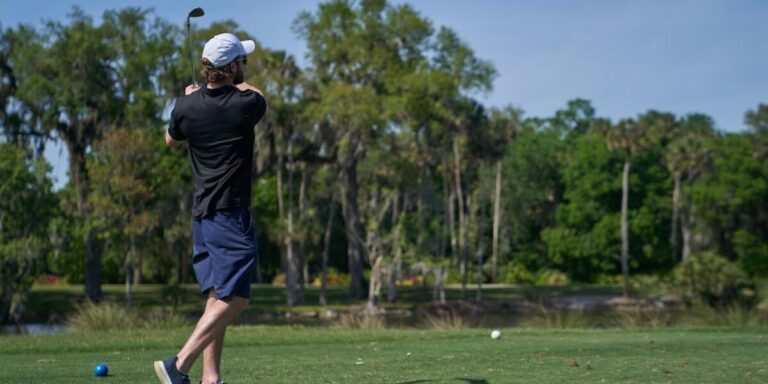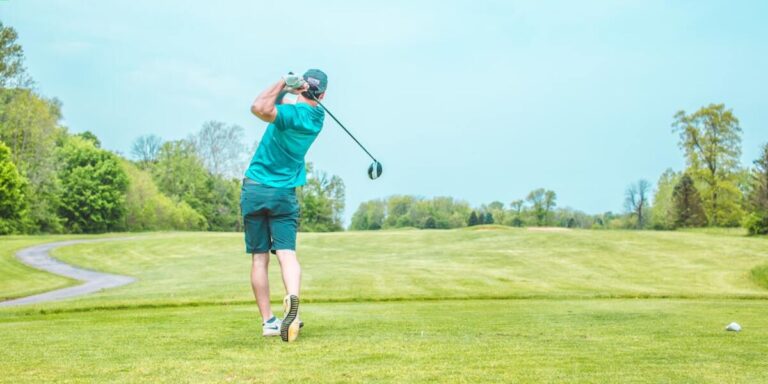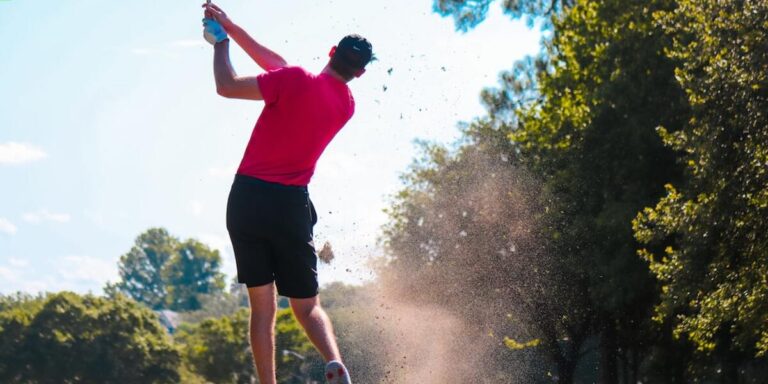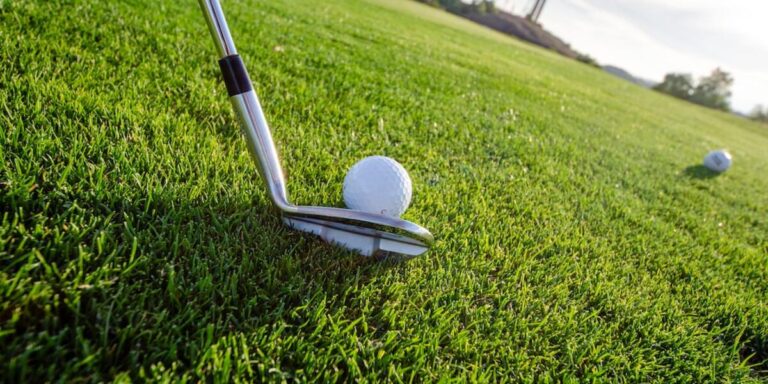Are practice golf balls worth it?
If you are an avid golfer, you know that practice makes perfect. You also know that the key to a good golf game is having the right equipment. When it comes to practicing your golf swing, using practice golf balls can make a big difference in your results. But are they really worth the extra money? Let’s take a look at the pros and cons of practice golf balls to help you decide if they are right for you.
On the plus side, practice golf balls are designed specifically for practicing your swing. They usually have a softer core which leads to lower spin rates and less hooking or slicing. This means that you will be able to hit them straighter and further, which is ideal for honing your skills on the driving range. In addition, because they don’t fly as far as regularballs, you won’t have to worry about losing them as often – saving you both time and money in the long run.
However, there are also some drawbacks to using pracitce golf balls . For one thing ,they tend to wear out quickly – meaning you’ll have
Why Practice Golf Balls are Important
If you’re serious about improving your golf game, then using practice golf balls is a must. Here’s why:
1) They help improve your accuracy. When you repeatedly hit the same target with a practice ball, you’ll start to see an improvement in your accuracy on the course.
2) They develop muscle memory. Hitting thousands of shots with a regularity will ingrain the correct swing mechanics into your muscles so that they become second nature.
3)They help improve club head speed. The added weight of most practice balls compared to regular golf balls forces you to generate more club head speed which leads to increased distance off the tee once transferred onto the course..
How to Choose the Right Practice Golf Ball
Choosing the right practice golf ball can be a challenge, but it is important to select a ball that best suits your needs. There are many factors to consider when choosing a practice golf ball, such as: type of terrain, skill level, and budget.
Type of Terrain: The type of terrain you will be playing on will play a big role in determining what kind of practice golf ball to choose. If you’ll be playing mostly on soft turf, then you’ll want to find a softerball that won’t damage the grass. Conversely, if you’ll be hitting off hardpan or concrete tee boxes, look for a harder-surfaced ball that can withstand more abuse.
Skill Level: Another factor to consider is your skill level. If you’re just beginning to learn the game, it might be beneficial to start with a lower-compression ball that is easier to hit straight. As you improve your skills and start generating more clubhead speed, however, you may want switchto acrusherthat compresses better and flies further. Of coursebudgetwill also come into play here – don’t break the bank trying different types of balls untilyou’ve settledinto agolfers’ grooveand know what works best for YOU!
Budget :Of course one additional factor which should not beconsidered last or least When making any purchaseis always How muchit costsOr in other wordsyour budgetJust becausea certain brandor styleof Practice Golf Ballcostsam lot doesn’t necessarilymean itsthe best fitfor YouYour Gameor Your walletOn the flipsideof this coin often times wecan finda quality productat an extremely fair priceSo do some window shoppingdo some researchand buywhat suits YOUR needswith
The Benefits of Using Practice Golf Balls
Did you know that practice golf balls can actually help improve your game? That’s right – by spending some time hitting balls into a net or on a driving range with softer, lower-compressionballs, you can supercharge your muscle memory and make real gains in accuracy and distance.
Why does this work? Well, it all comes down to feel. When you swing a club at high speed, the contact between the clubface and ball is over in the blink of an eye. But what your brain really registers is the “feel” of that collision – how hard or soft the impact was, where on the clubface you hit it, how open or closed your stance was. By using softerballs during practice sessions, you train your body to repeat good swings without fear of damaging expensive clubs or injuring yourself.
Plus, there’s another big benefit to using lower-compression golf balls: they tend to fly straighter than their harder counterparts. If you struggle with a hook or slice, getting some extra yardage out of each shot will be invaluable come tournament time. So if you’re looking for an edge on the competition (or just want to improve your handicap), investing in a few dozen practice golf balls is well worth it!
What to Look for When Buying a Practice Golf Ball
When it comes to choosing a practice golf ball, there are a few things you’ll want to keep in mind. First and foremost is the material the ball is made of. Practice golf balls come in both plastic and rubber varieties, each with their own benefits and drawbacks. You’ll also want to consider the size of the ball – small balls are great for precision shots while larger ones can help you work on your power game. Finally, take into account what type of terrain you’ll be using the ball on – soft grass or hard concrete? Once you’ve considered all these factors, you’re sure to find the perfect practice golf ball for your needs!
How to Use Practice Golf Balls in Your Training Routine
Golf is a sport that requires precision and accuracy. One way to improve your game is by practicing with golf balls specifically designed for training purposes. Here are some tips on how to use practice golf balls in your routine:
1. Use them on the driving range: Hitting a few balls at the driving range is a great way to warm up before a round or practice your swing. Having specific training balls will help you focus on your technique and make adjustments as needed.
2. Set up targets: Whether you’re working on your drive or honing in on your approach shots, setting up targets can be beneficial. This will help you gauge distances and work on hitting specific spots consistently. Training golf balls are ideal for this type of practice because they’re usually cheaper than traditional golf balls and won’t cause as much damage if they miss the target!
3. Take lessons: Private or group lessons from a certified instructor can do wonders for improving your game overall – and using training golf balls during these sessions can be very helpful The instructor can provide feedback regarding ball flight and trajectory, which can be difficult to assess when using regular golf balls..
Get the Most Out of Your Game: Tips for Using Practice Golf Balls
When it comes to practicing your golf game, using the right type of ball can make a big difference. That’s why it’s important to choose practice golf balls that are designed to help you improve your skills. Here are a few tips for making the most out of your practice session:
1. Choose a ball that simulates the conditions you’ll be playing in. If you’re going to be practicing on a course with tough rough or fast greens, look for a ball that will replicate those conditions. This way, you’ll get used to how the ball reacts and perform under difficult circumstances.
2. Consider your swing speed when selecting a practice ball. If you have a slower swing speed, choose a softerball that won’t travel as far; this will help prevent slicing and other inaccuracies caused by too much spin on the ball. Conversely, if you have a faster swing speed, opt for harderballs that will give you more distance but require greater precision.
Troubleshooting Common Problems with Practice Golf Balls
Practice golf balls are an essential tool for any golfer serious about improving their game. They allow you to fine-tune your swing and work on specific shots without having to worry about losing a real ball. But as with any piece of equipment, there can be problems from time to time. Here are some common issues and how to fix them.
2. Common Problems with Practice Golf Balls
One issue that sometimes crops up is practice golf balls not flying straight. This can be due to several factors, such as the type of ball you’re using or the condition of the clubface. If you’re using a lower-quality ball, it may not have been made according to strict quality standards, which can affect its aerodynamic properties and cause it to fly erratically. Check your clubs too – if the face is dented or damaged in any way, that could also be throwing off your shot’s accuracy.
Another problem that might arise is practice golf balls getting stuck in trees or other obstacles more often than usual. Again, this could be due to the type of ball – cheaper ones tend to compress less when hit and thus don’t travel as far as higher-quality ones do; they also tend to have softer covers that make them more susceptibleto being “grabbed” by tree branches and other objects . If you find yourself constantly retrieving balls from behind bushes or out of ponds , try upgrading tp a better brand of practice golf balls . You’ll likely see significant improvement in both distance and accuracy .
Frequently Asked Question
-
Are practice golf balls worth it?
-
How far can you hit practice golf balls?
-
Can you practice golf with ping pong balls?
-
Does practicing with foam golf balls help?
-
How are practice golf balls different?
-
Are plastic or foam practice golf balls better?
-
Can you practice your swing without a ball?
-
What golf balls should I practice with?
-
Are chipping nets worth it?
-
Is it good to practice golf with Wiffle balls?
-
Do practice golf balls go as far?
-
Is hitting plastic golf balls good practice?
-
How much do you need to practice golf?
-
What is the best golf club to practice with?
-
How often should you practice your golf swing?
Is it worth buying practice golf balls? It is worth the investment in practice balls. These balls are affordable and easy to use at home. Because they look just like regular golf balls, practice golf balls are dimpled.
The practice balls are smaller than the regular golf balls, and they travel further when struck. They can only be hit for 40 yards.
Different trajectories for hitting the landing spot Pro Tip: Ping Pong balls make great indoor practice. This can be practiced with a couple of different chipping clubs, and any kind of target.
Foam golf balls are good for practicing? They are. Foam practice balls can be used to perfect your golf swing at home, or in your backyard.
Range balls can be used repeatedly, and they are more durable than regular or standard golf balls. Their cores are generally firmer and their covers thicker. This means they travel more and offer a stronger connection.
Which is better: Foam or plastic practice golf balls? Foam golf balls feel more natural and are stronger than plastic.
Swinging with a golf ball can lead to poor form and possibly engrained bad habits. Instead of hitting the balls, it is better to swing without a club and in slow motion. Lucas Wald is a GOLF Teacher of the Watch and PGA Tour Coach. He makes slow motion without a ball a major part of his teachings to students.
Foam balls can be used indoors for practice but you also have the option to use them outside. Foam balls don’t require much space. You won’t need much space as they can fly fast off your club face.
A chipping net can help you to save hundreds of greens shots without having to spend money at the range. A pitching net allows you to practice in your home and improve your game without ever having to travel to the golf course.
Yes! For practicing in tight areas, wiffle balls can be a great option. These balls allow golfers to practice chipping and pitch shots, as well as making contact solidly with the ball. It is crucial to hit the ball straight and be a good short-game player.
As a rule of thumb, range balls travel 10 yards more if struck with short or wedge irons. Drivers will notice a decrease in distance the longer they have the club. Data shows that premium and range balls travel about the same distance.
Yes! For practicing in tight areas, wiffle balls can be a great option. These balls allow golfers to practice chipping and pitch shots, as well as making contact solidly with the ball. It is crucial to hit the ball straight and be a good short-game player.
What is the minimum amount of time you should play to improve your golf game? To improve your game, most golf coaches suggest that you play at the least one week per week. A player who spends more time at the range will achieve better results than if they play on the fairway. You will reap the rewards when you put your practice into the game.
Most golfers know that the 7-iron club is the most difficult to master. If you’re lucky enough, a 5-iron can go farther, so you could be at the green in two. However, a 7-iron is the most efficient, going 120 to 130 yards and getting you on the green in just four.
You should be practicing at least three to four times each week if you are going to break the next golf scoring barrier. You should be practicing at most 1-2 times per week if you wish to keep your level.
Conclusion
So, are practice golf balls worth it? that really depends on the person and their needs. if you want to improve your game and have the money to spend, then they may be a good investment for you. However, if you’re just starting out or aren’t looking to make any major changes to your swing, then you can probably get by with some cheaper options. Ultimately, it’s up to the individual golfer to decide what’s best for them. Thanks for reading!







